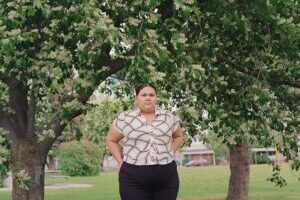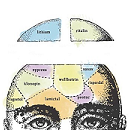From Mother Jones: “A yearlong Mother Jones investigation shows that thousands of foster kids have been admitted in recent years to UHS’s [Universal Health Services] psychiatric facilities, where they typically stay for weeks or months, sometimes leaving far worse off than when they arrived. Foster children provide a lucrative patient base for the same reasons they’re so vulnerable: There’s rarely an adult on the outside clamoring to get them out, and often, they don’t have anywhere else to go. Plus, Medicaid typically foots the bill, which at North Star costs $938 per night. As [Alaska resident Katrina] Edwards notes, ‘They got a lot of money from me’ . . .
Over time, a symbiotic relationship has developed between overburdened child welfare agencies, which have too many kids in custody and not enough places to put them, and large, for-profit companies like UHS, with beds to fill and profits to make, says Ronald Davidson, a psychologist and the former director of the Mental Health Policy Program at the University of Illinois at Chicago. Over the course of two decades, until 2014, Davidson and his team reviewed hundreds of psychiatric facilities across the country as part of a consent decree intended to reform Illinois’ child welfare system. He also conducted similar reviews as a DOJ consultant. ‘The sales pitch—”We can offer solutions to your overwhelming caseloads of high-needs children”—appeared irresistible to frantic agencies in need of more beds,’ he explains, ‘and many of them desperately took the bait.’ Kids often come back to facilities again and again, acting out more with each admission. ‘Unfortunately, in many hospitals, the door only swings one way,’ Davidson says. ‘You become a patient, and you stay a patient.’ To UHS and its competitors, he concludes, foster kids are ‘a gold mine.’
For some foster children, the results have been devastating. As Edwards endured her stay at North Star, a 12-year-old West Virginia foster child was placed at UHS’s Cedar Grove Residential Treatment Center, a program in Tennessee for sexually abusive and reactive boys, even though he wasn’t a sex offender. He begged his caseworker to let him leave but was held at the facility for 18 months, according to a subsequent lawsuit against the state’s CPS agency. In 2018, Oregon CPS sent a 14-year-old girl to Provo Canyon School, where she experienced 42 instances of peer assault, seclusion, or restraint—including being forcibly injected with the antipsychotic Haldol 17 times—over the course of three months, according to records obtained by state officials. The same year, Virginia’s CPS agency sent 17-year-old Raven Nichole Keffer to UHS’s Newport News Behavioral Health Center, where she collapsed after days of complaining of feeling sick. According to a lawsuit, a 15-year-old patient was the first to call 911; Keffer died of an allegedly preventable adrenal insufficiency. In 2021, Alabama CPS placed a 10-year-old at UHS’s Alabama Clinical Schools, where he was repeatedly assaulted by staffers over six months, resulting in a broken collarbone and black eye, in addition to being bitten by scorpions in his bed ‘many times,’ according to a recent lawsuit. When he reported the injuries, staffers allegedly threatened to kill him.
. . . Last year, when a lawyer in Alaska offhandedly mentioned that OCS uses North Star as a ‘dumping ground,’ I started talking to foster kids about their experiences at the facility. I was struck by the similarities in their stories: the frequency of restraints and booty juicing; the panic of being sent to the quiet room; the claims that a caseworker or staffer said they were only there because they were waiting for a foster home; even the banging on the double-paned windows. The problem transcends Alaska or UHS. As many lawsuits have documented, child welfare agencies across the country rely on locked psychiatric facilities, many of which use punitive disciplinary tactics, to house difficult-to-place kids. These placements disproportionately affect children of color. Black and Indigenous kids—including Edwards, who is part Yupik—are more likely to enter the foster system and more likely to be sent to residential treatment facilities.
. . . The data shows that child welfare agencies routinely send foster children to UHS programs already implicated by damning inspections and media reports. Hundreds went to Provo Canyon, whose license was threatened twice after children escaped or were injured during physical restraints . . . Hundreds more went to Hill Crest Behavioral Health Services, where internal videos revealed by BuzzFeed in 2017 showed staffers repeatedly beating and dragging young patients, to the condemnation of members of Congress, and to North Star, where federal investigators last year reported escapes, assaults, and a patient not receiving a single therapy appointment for 40 days.”

***
Back to Around the Web











